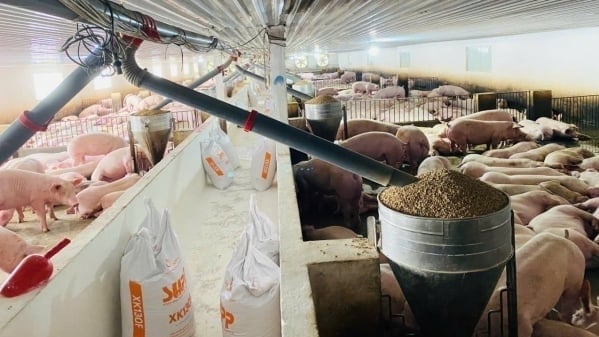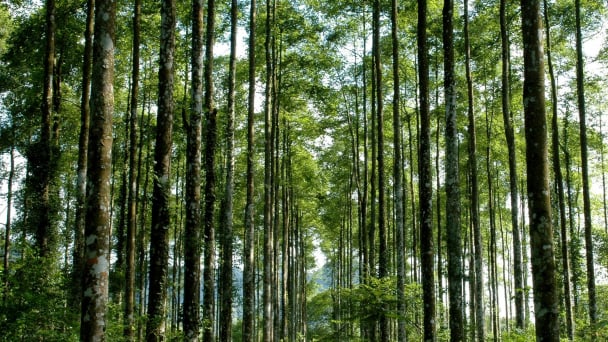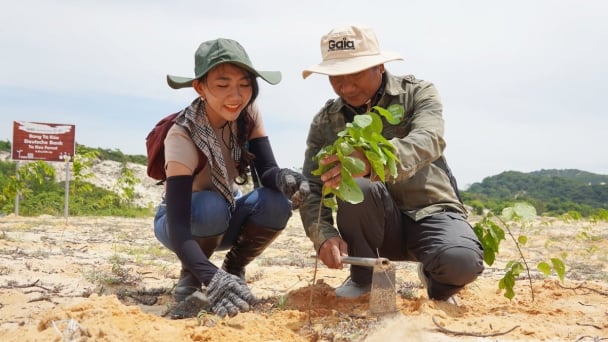September 3, 2025 | 10:41 GMT +7
September 3, 2025 | 10:41 GMT +7
Hotline: 0913.378.918
September 3, 2025 | 10:41 GMT +7
Hotline: 0913.378.918

Tissue cultured orchids in High-Tech Agricultural Park - Ho Chi Minh City. Photo: Son Trang.
On October 6th, the Workshop “Status quo and developing high-tech agricultural solutions in Ho Chi Minh City until 2030, vision to 2045” was co-organized by the School of Public Policy and Rural Development and Management Board of High-Tech Agricultural Park - HCMC. Dr. Pham Dinh Dung, Head of the Management Board, states that for many years the City has been aware and prioritized applying high technology to agricultural production.
Specifically, HCMC leaders have identified a strategic vision for high-tech solutions to be applied in agricultural production. By producing agricultural goods and simultaneously developing eco-tourism, high-tech and science applications will bring many economic and social benefits.
In recent years, Ho Chi Minh City has focused on building facilities and establishing pioneering units in the field of smart agriculture. These facilities are High-tech Agricultural Park, Biotechnology Center, Trai Trinh Demonstration and Experimentation of High-tech Dairy Farming... The People’s Committee of HCMC also approved the program “Developing plant varieties, animals and high-tech agriculture for 2020-2030.” This is the direction to focus on research and development of high-tech agriculture.
With the attention and investment of Ho Chi Minh City leaders, the development of high-tech agriculture in the area has achieved remarkable results in cultivation, livestock and aquaculture. This has contributed to improving production value per hectare of land. Overall, between 2015 and 2020, the value of agricultural production per hectare in HCMC reached about 500 million VND.
According to Master Nguyen Thi Thao Trang (School of Public Policy and Rural Development), agricultural land is sinking, posing challenges for agricultural production (especially due to land and water resources being depleted, and pollution caused by factories and industrial parks). then develop urban agriculture, apply science and technology and the inevitable and urgent agriculture trend in Ho Chi Minh City.

Workshop Status quo and developing high-tech agricultural solutions in Ho Chi Minh City until 2030, vision to 2045.Photo: Son Trang.
Therefore, the People’s Committee of HCMC has set a common goal by 2030 to promote high-tech agriculture, focusing on biotechnology, information technology, automation technology and advanced technologies to create high-quality agricultural products in terms of plant varieties, livestock, and aquatic products; farming methods, cultivating commercial products and post-harvest preservation technology to create agricultural products with high productivity, quality, added value, safety and competitiveness.
Mr. Dinh Minh Hiep, Director of HCMC Department of Agriculture and Rural Development, says that the city’s agricultural sector is committed to proactively adapting to rapidly shrinking agricultural land. Leaders are oriented to develop urban agriculture, apply high technology, biotechnology, and plant seed production. At the same time, they aim to transform the area of rice, sugarcane, and salt with low efficiency to crops and livestock with high economic value. This strategy of developing high-tech agriculture in the city until 2030, with a vision to 2045, is extremely necessary.
According to Dr. Bui Ba Bong, former MARD Deputy Minister, applying high technology to production will help farmers in HCMC increase their income, contribute to environmental protection, and create more jobs in suburban areas.
HCMC Department of Agriculture and Rural Development states that based on the viewpoints, orientations and goals to develop high-tech agriculture in the city by 2030, with a vision to 2045, it is necessary to focus on implementing a number of solutions. First of all, unify policies and complete policies, planning and expanding and upgrading the infrastructure of high-tech agricultural production zones and high-tech seed production areas. Promote research and application of high-tech science and technology in agricultural production.
At the same time, support businesses, cooperatives and farmers in high-tech agricultural production. Attract investment for high-tech agricultural development, develop consumer markets, and price high-tech agricultural products.
Besides, it is building a stable and sustainable chain of production and consumption links; Promoting the development of high-tech agricultural human resources; improving staff capacity; Strengthening agricultural extension work, technology transfer, and promoting high-tech agricultural communication activities to raise awareness for producers.
Mr. Dinh Minh Hiep, Director of HCMC Department of Agriculture and Rural Development, said that with the set goals and plans, city leaders hope that by 2030, at least 70% of the city's agricultural production will apply high technology.
Translated by Quynh Chi

(VAN) Amid the African swine fever ‘storm’, large-scale livestock farms in Lao Cai remain safe thanks to strict biosecurity practices.
/2025/09/02/2302-5-070350_276.jpg)
(VAN) Prof. Dr. Pham Hong Giang, former Deputy Minister of Agriculture and Rural Development, shared his unforgettable memories of constructing large reservoirs and dams in Central Vietnam.
/2025/09/01/2628-2-151932_465.jpg)
(VAN) From the Da Nhim forests with 'wildlife trap-removal knights' to Cuc Phuong National Park, conservation has become a pivotal shift, shaping a modern Vietnamese forestry.

(VAN) The dugong population in Con Dao has been steadily declining due to multiple causes, raising urgent demands for seagrass meadow restoration and tighter control of human impacts.

(VAN) From seedlings to forest carbon maps, science and technology are becoming the 'brain' and 'heart' that guide forestry toward sustainable development and deeper integration into global supply chains.

(VAN) Vietnam is increasingly vulnerable to the impacts of climate risks and natural disasters. Without timely adaptation measures, climate change could cause the nation’s GDP to shrink significantly.
/2025/08/31/4433-3-134030_475.jpg)
(VAN) After 15 years of implementation, payments for forest environmental services have created a stable source of income, helping thousands of households and indigenous communities stick more with forests.